Cape Town sprawls beneath the majestic Table Mountain in the heart of the mega-diverse Cape Floral Kingdom. With 3.74 million inhabitants, it is South Africa’s second most populous city. Despite the obvious ecological stressors resulting from the city’s high metabolism and rapid expansion (ca. 1.4% per year), a spectacular richness of biodiversity survives within and around the city limits.
Early European settlers of the Cape quickly denuded the region’s small patches of native forest. To compensate for this loss, they undertook several waves of planting, primarily for timber, fruit and shade but also for aesthetic beauty and defence (see tree No. 11 below). Consequently, many of the heritage trees found in Cape Town today have been introduced, typically from Europe or other distant parts of the world with historical trade links to the Cape. Yet even non-native trees can be valuable, especially in terms of ‘cultural ecosystem services’.
This article is a sequel to an earlier installment, entitled, Trees as Starting Points for Journeys of Learning about Local History, published on 1 September 2013. In that article, I explored the historical, cultural and spiritual dimensions of a selection of remarkable trees found in the vicinity of Cape Town, South Africa. I suggested that such trees have distinctive personalities, reflected in the various anecdotes that we attach to them; that they shed light on the cultural value systems and economic priorities of bygone generations; and that they provide excellent starting points for journeys of learning about a city, journeys that have no fixed route or endpoint.
I argue that such trees deserve greater recognition and protection for their part in enriching the urban landscape.
Here follows a selection of additional Capetonian Heritage Trees
9. Van Riebeeck’s Hedge
Africa is the cradle of humankind. There is evidence of modern humans living 130,000 years ago in the Western Cape and at least 30,000 years ago in what is now Cape Town. Comparatively recently, in the late 1400s, European explorers began foraying into the Cape coming face to face with the region’s indigenous people: interconnected communities of San (hunter-gatherers) and Khoikhoi (nomadic pastoralists), collectively known as Khoisan. Each summer, the Khoikhoi would bring herds of cattle across the Cape Flats to graze on the slopes of Table Mountain. Delighted to find a reliable supply of fresh meat, the Europeans quickly established trade with the Khoikhoi, exchanging metal for livestock. The first transaction is recorded to have taken place in December, 1497, in Mossel Bay.
In 1652, when Jan van Riebeeck of the Dutch East India Company (VOC) arrived at the Cape with orders to establish a victualing station, relations with the Khoisan took a turn for the worse. Essentially nomads without a written culture or bureaucratic governance system, the Khoisan did not have written title deeds. Accordingly, van Riebeeck contrived to deny the Khoisan their traditional land rights, provoking a revolt and ultimately bringing an end to a long period of reasonably friendly association (with some notable exceptions e.g. see No. 1, in Trees as Starting Points for Journeys of Learning about Local History). Cattle theft and bloody skirmishes became increasingly common. In 1660 Van Riebeeck ordered new defences to be built, including the planting of a Wild Almond (Brabejum stellatifolium) hedge around the perimeter of the settlement, encompassing an area of about 6 miles by two.
The Wild Almond is a member of the Protea family and closely related to the Australian Macademia Tree. It grows as much horizontally as it does vertically, posing an almost impassable barrier to cattle. Its wild fruits were harvested, specially prepared and eaten by the Khoisan. Today one can find remnants of Van Riebeeck’s Hedge on a leafy ridge in Kirstenbosch National Botanic Garden. There, a plaque reads:
For many, this hedge marks the first step on the road to Apartheid and symbolizes how white South Africa cut itself off from the rest of Africa, dispossessed the indigenous people and kept the best of the resources for itself. Our challenge in South Africa today is to dismantle the barriers erected in the past, share the resources equally and build a home for all.
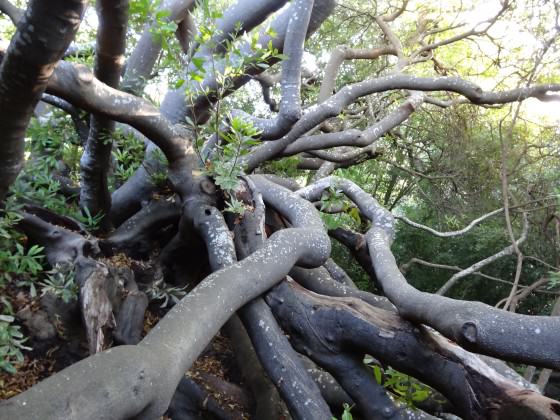
10. The Namesake of the Palm Tree Mosque
A raucous collision of colour where old meets new, tourists meet pickpockets, businessmen meet prostitutes, and drunkards meet drug-dealers: Long Street — the ‘beating heart’ of Cape Town — is not a savoury place. Yet skirting this canyon of intemperance, tucked among the busy restaurants, clubs and stores are architectural gems of great antiquity including one of the city’s most enduring and historic spiritual spaces: the Palm Tree Mosque.
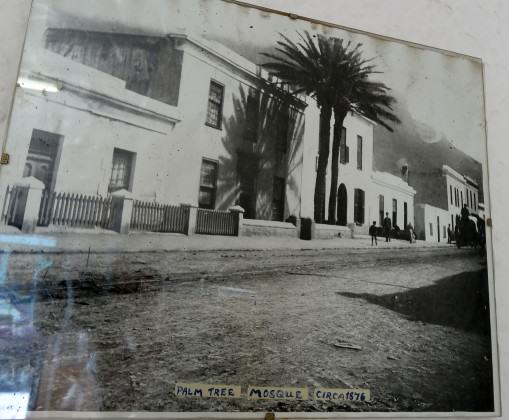
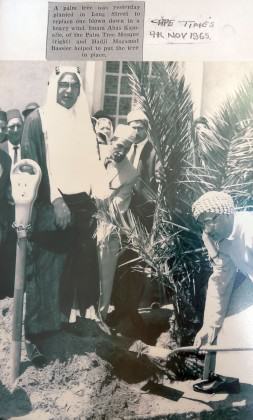 Also known as the Dadelboom Mosque, it is the second-oldest place of Muslim workshop and one of the oldest substantially unaltered buildings in Cape Town (constructed c. 1780; second story added c. 1820).
Also known as the Dadelboom Mosque, it is the second-oldest place of Muslim workshop and one of the oldest substantially unaltered buildings in Cape Town (constructed c. 1780; second story added c. 1820).
Two tall palm trees (species unidentified) once towered above a small garden in front of the mosque. The garden is now pavement and only one of the original trees remains; the other fell victim to the fierce ‘south-easterly’ presumably in the early 1960s, as a framed photograph inside the mosque, suggests that a replacement tree was planted in 1965. Segments of the deceased tree’s trunk are seemingly used as stools inside the mosque.
In Islamic culture, palm trees are deeply symbolic: they appear around oases to signal water as a gift of Allah; they are said to grow in the Islamic paradise of Jannah; Muhammad built his home and the first ever mosque out of palm trees; the first muezzin would climb up palm trees to proclaim the call to prayer; and in the Quran (19:16–34), Jesus was born under a palm tree.
Under Dutch rule of the Cape, Islam could not be practiced in public. They banished one of the founders of Islam in the Cape, Tuan Guru (‘Mister Teacher’), to Robben Island where he famously wrote his own edition of the Quran from memory. Restrictions were relaxed when the British took control in 1795 and the free Tuan Guru soon established the Auwal Mosque (the city’s oldest mosque).
In the early 19th century, two freed slaves, Jan van Boughies and Frans van Bengalen, turned their backs on the Auwal Mosque after the former failed to succeed as imam. In 1807, they purchased the building which they would fashion into the Palm Tree Mosque. Records suggest that Van Boughies eventually owned 16 slaves, although some sources suggest that he only purchased them to set them free. Van Boughies died in 1846 at the age of 112, bequeathing the property to his wife under the condition that it would continue functioning as a mosque.
11. The Money Tree in Kalk Bay
Money may not grow on trees, but it often changes hands beneath their branches. In the sleepy fishing village of Kalk Bay in the southern suburbs of Cape Town, the Money Tree — a Monterey cypress (Cupressus macrocarpa) — is said to have sheltered countless transactions.
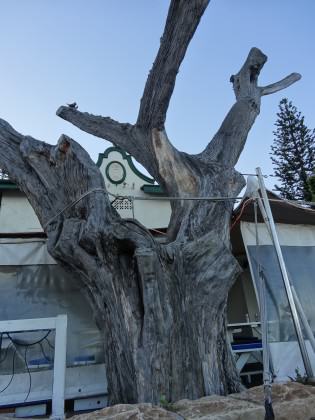 From the late 1600s to 1850s, Kalk Bay — as its name would suggest — supported a lime industry burning locally abundant seashells in kilns. With the demise of that industry, fishing emerged as the village’s economic staple. After each day at sea, it was under the Money Tree, safe from driving rain or blistering heat, that fishing boat skippers would dispense wages to their crews. So too, traders known as ‘langgannas’ — a Malay word reflecting Capetonian ancestry — would gather around the Money Tree to purchase cartloads of fish. These they would lug some 30 km north to Table Bay, blowing traditional fish horns at way stations to announce the arrival of their commerce.
From the late 1600s to 1850s, Kalk Bay — as its name would suggest — supported a lime industry burning locally abundant seashells in kilns. With the demise of that industry, fishing emerged as the village’s economic staple. After each day at sea, it was under the Money Tree, safe from driving rain or blistering heat, that fishing boat skippers would dispense wages to their crews. So too, traders known as ‘langgannas’ — a Malay word reflecting Capetonian ancestry — would gather around the Money Tree to purchase cartloads of fish. These they would lug some 30 km north to Table Bay, blowing traditional fish horns at way stations to announce the arrival of their commerce.
Many of Kalk Bay’s ‘coloured’ residents survived the abhorrent Group Areas Act of 1966, receiving dispensation from forced removal. As such, Kalk Bay enjoys a cultural continuity unknown to other parts of Cape Town. However, decades of overfishing have dramatically reduced the size of the fishing fleet and the Money Tree now hangs rotting by the roadside, devoid of leaves, a skeleton of its former glory.
12. The Kindergarten Giant
A century-old Moreton Bay Fig (Ficus macrophylla) — indigenous to the east coast of Australia — radiates from a kindergarten in the University of Cape Town. Scores of children find magic and adventure in the deep boughs and buttresses of its roots. With a girth (trunk circumference) of 16m and a crown of 41m, it is also known as the Big Friendly Giant. However this giant is dwarfed by its sibling living just a few miles away in Claremont’s Arderne Gardens (see No. 13).
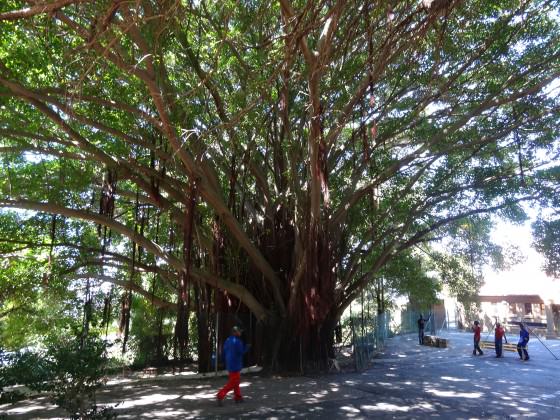 13. The Colossi of Arderne
13. The Colossi of Arderne
In the southern suburb of Claremont an extraordinary garden is home to some of South Africa’s most colossal trees.
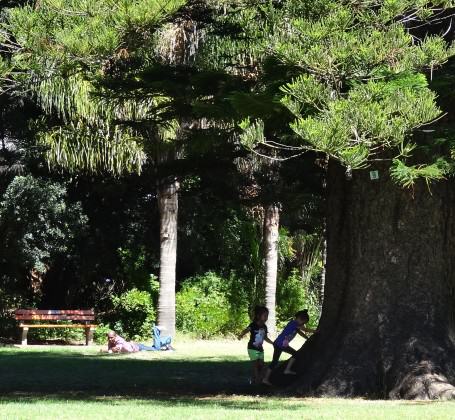
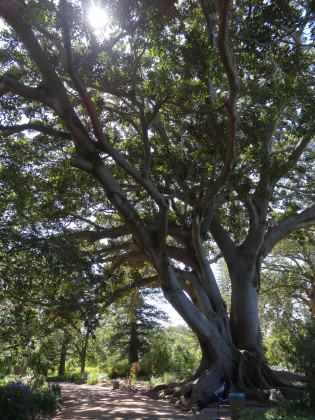
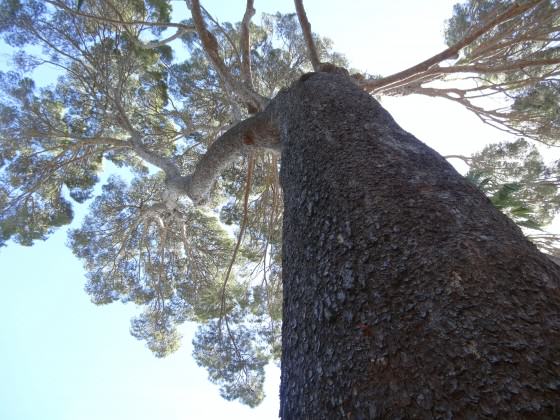 The Arderne Gardens were established in 1845 by the Englishman, Ralph Arderne, who had amassed a considerable fortune as a timber merchant. His trade enabled him to collect plants from all over the world and soon his garden became famous for its exceptionally-beautiful collection of exotic trees. Ralph Arderne died in 1885, but his son, Henry, continued to develop the garden well into the 20th century. When Henry died in 1914 on the eve of the Great War, it is said that one of the original Norfolk Island Pines which is father had planted, synchronously withered and died. The garden then passed to a property developer who threatened to divide up the land into building lots. However, much of the garden was salvaged when, buoyed by a public outcry, the City’s Director of Parks and Gardens, Mr. A. W. van den Houten, persuaded the City Council to purchase the most important part. For the following 27 years, the garden was curated by M. A. Scheltens, who is said to have forgone several promotions in order to stay with the trees he so loved.
The Arderne Gardens were established in 1845 by the Englishman, Ralph Arderne, who had amassed a considerable fortune as a timber merchant. His trade enabled him to collect plants from all over the world and soon his garden became famous for its exceptionally-beautiful collection of exotic trees. Ralph Arderne died in 1885, but his son, Henry, continued to develop the garden well into the 20th century. When Henry died in 1914 on the eve of the Great War, it is said that one of the original Norfolk Island Pines which is father had planted, synchronously withered and died. The garden then passed to a property developer who threatened to divide up the land into building lots. However, much of the garden was salvaged when, buoyed by a public outcry, the City’s Director of Parks and Gardens, Mr. A. W. van den Houten, persuaded the City Council to purchase the most important part. For the following 27 years, the garden was curated by M. A. Scheltens, who is said to have forgone several promotions in order to stay with the trees he so loved.
Today, the Arderne Gardens remains one of Cape Town’s most popular green spaces, drawing sunbathers, picknickers, joggers and dog-walkers. Over weekends dozens brightly-coloured wedding parties pose for photo-shoots in the garden. One of the garden’s huge Norfolk Island Pines (Auraucaria heterophylla) features so regularly as a backdrop, that it is now colloquially known as the “Wedding Tree”. Of the many impressive trees in the Arderne Gardens, some are particularly huge. For instance, the world’s largest Aleppo Pine (Pinus halepensis) — native to the Mediterranean region — forms a giant corner-post of the garden, not far from the largest individual tree in the Western Cape and possibly South Africa: the Moreton Bay Fig (Ficus macrophylla).
14. To be continued…
Russell Galt
Cape Town


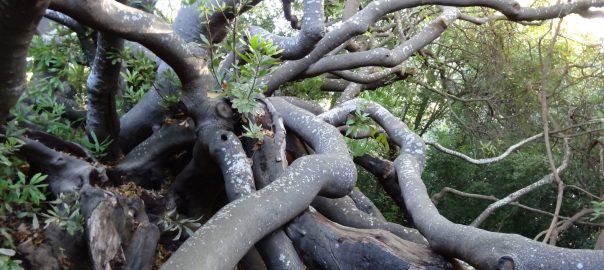
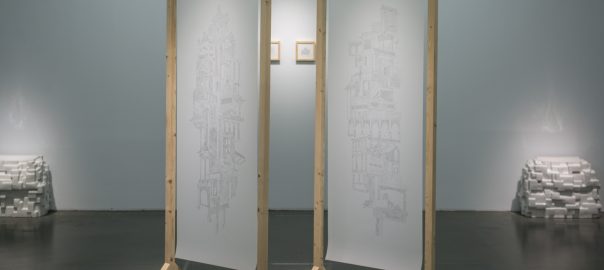
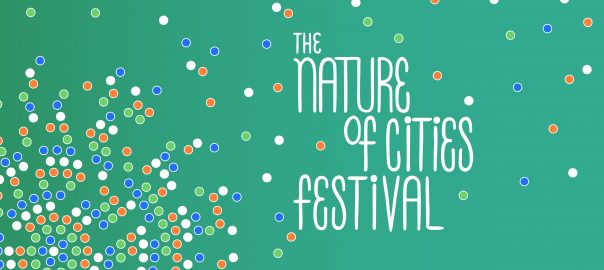
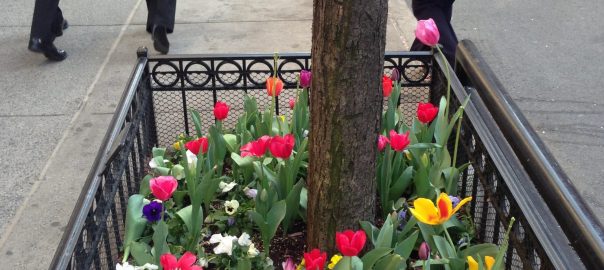
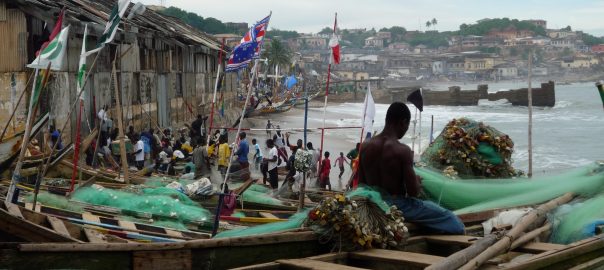
Leave a Reply